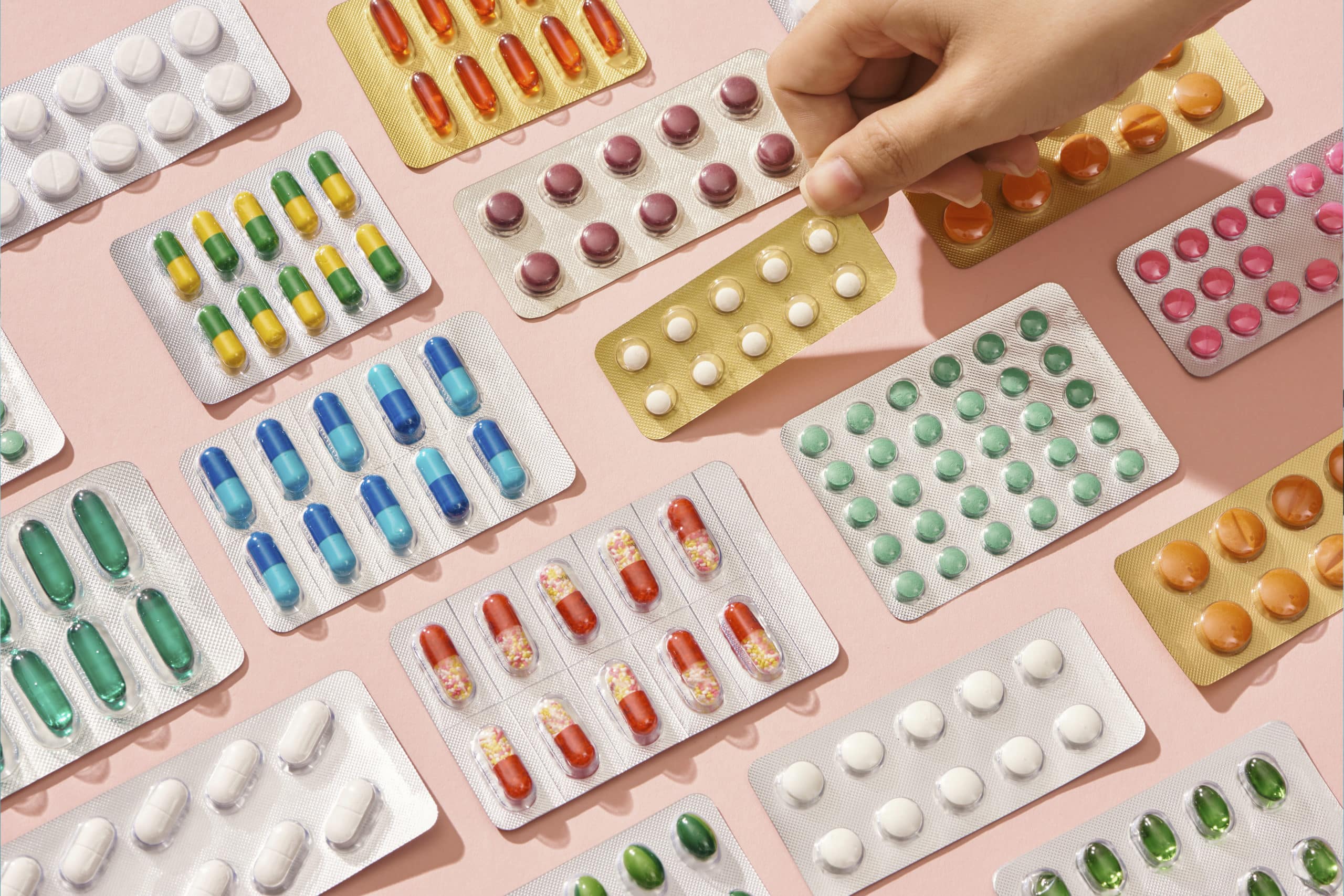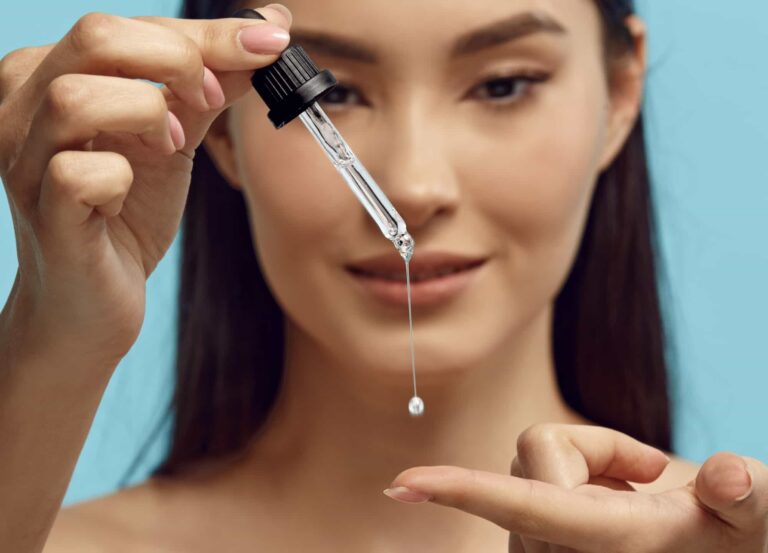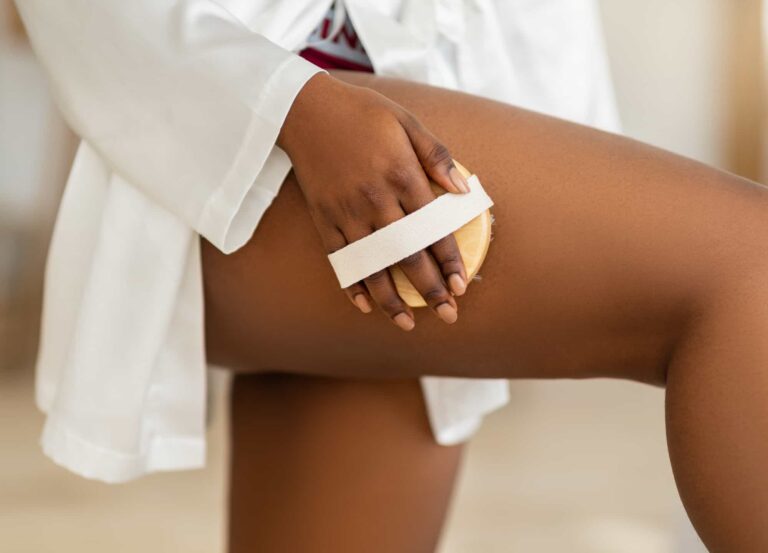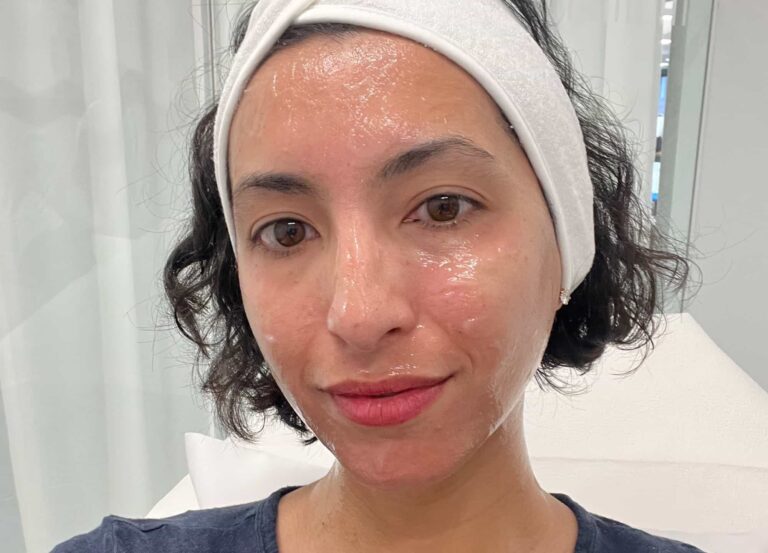The older I get, the better I am at setting boundaries. That flaky friend who always cancels? Nope, not putting in the effort. Work emails on a Friday night? Sorry, not answering. Subjecting my skin to the “retinol uglies” in pursuit of perfection? Not. Gonna. Do it.
Years ago, I set a hard boundary in my skin-care routine: I don’t touch anything that compromises my stratum corneum—the skin barrier, the biome, the precious layer of cells that connects my insides to the outside world. Why? Because my poor, sweet barrier has been through it. In my younger years, I wiped out its moisture supply with a sebum-sucking round of Accutane. More recently, I permanently thinned it with an overenthusiastic application of topical steroids (it’s called “skin atrophy,” and it’s not fun). In between, I submitted it to harsh exfoliating acids and stripping sulfate cleansers and burning spots of benzoyl peroxide—anything that promised to fix my “problem” skin. Did any of these things actually fix my problem skin? Nope. They only served to pummel my barrier and compound my problems.
Now, at the wise, old age of 30, I know better. My entire routine is built around supporting the stratum corneum—omega fatty acids, probiotics—and my face is very happy about it. The one downside is that I personally have to take a hard pass on pretty much all of the beauty industry’s most beloved skin-care ingredients, including retinol, which is the gold standard for reducing wrinkles and boosting collagen but has the unfortunate side effects of thinning the stratum corneum (even though it temporarily thickens and then normalizes the epidermal and dermal layers of the skin) and causing all kinds of irritation.
“With retinol, when you slough off the dead skin cells, you obviously weaken the barrier,” says Dr. Steven G. Wang, a board certified dermatologist in New York City. “That irritation phenomenon that strips off the stratum corneum and causes irritation and flakiness—that’s what most people cannot tolerate, especially people with eczema and sensitive skin.” Yes, hi, hello, that’s me. “But people still want the therapeutic anti-aging benefit of thickening up the epidermal layer and thickening up the collagen layer of the dermis,” he says. “That’s what gives that radiance and translates to improvement in appearance.” Unfortunately, with most topical retinol, it’s all but impossible to get the latter without the former.
When another dermatologist randomly mentioned the high retinoic acid content of lamb liver in the middle of an interview though, my eyebrow shot halfway up my forehead. Could I maybe just… eat my retinol and skip that whole barrier-stripping, flaky-face thing?
Yes, dermatologists say, I can—and there are many ways to do it. “Retinol is derived from vitamin A,” explains Dr. Michele Green, a board-certified dermatologist in New York City. “Our body doesn’t produce vitamin A naturally, so it must be consumed through food.”
Related: 6 Dermatologists Reveal Their Favorite Retinols Under $50
Sadly, unlocking the aesthetic rewards of vitamin A isn’t as easy as eating a serving of carrots and calling it a day. The vitamin A found in plants is actually beta-carotene, or “provitamin A,” which is less potent than retinol, an “active” form of vitamin A. One level up from retinol is the really powerful stuff, retinoic acid. (For reference, Accutane is ingestible retinoic acid.) “Beta-carotene is converted into retinoic acid by the body,” Dr. Green explains. You would need to eat about six units of beta-carotene to convert just one unit of retinol, which the body then has to metabolize into retinoic acid in order to get visible results.
It’s exactly how topical retinol works, actually. “The reason topical retinol causes these side effects is because the skin itself is metabolizing the ingredient and converting into retinoic acid,” Dr. Green says. “Consuming retinol through ingestible sources has fewer side effects because the ingredient is being metabolized through the body itself, which doesn’t allow the skin’s barrier to be disrupted.” (It’s also important to note here, says Danville, California, board-certified dermatologist Dr. Sonia Badreshia-Bansal, that no studies have been done on the use of oral retinol.)
While that makes my barrier-loving heart swell with excitement, it also means that visible changes in the skin are slower and more subtle. “A beta-carotene vitamin A supplement mostly acts as an antioxidant, keeping the skin cells healthy,” Dr. Green explains. She recommends eating carrots, spinach, broccoli, and sweet potatoes but notes that “when consuming foods with vitamin A, your skin will not get all the nutrition. It’ll be distributed throughout the entire body.” In other words: You should definitely feed your face some vitamin A, but don’t expect retinol-level results from beta-carotene alone.
This is what Jules Miller, founder and CEO of The Nue Co., had in mind when she formulated the company’s Skin Filter supplement. She calls it a “gentle, nonirritating version” of topical retinol. “The goal was to create a product that would be as low-maintenance as possible but that would still make me feel confident about walking outside without anything on my skin,” Miller says. Beta-carotene was a no-brainer—“it stimulates fibroblasts, the cells responsible for developing tissue that keeps skin firm and healthy”—but she knew the formula needed a bit of a boost.
“Skin Filter’s key ingredient is a proprietary blend containing champagne grape seed, melon, vitamin C, and zinc,” she says, “and it works to directly take on multiple skin concerns in one go—blemishes, pigmentation, redness, and dull skin.” It takes about two months to see it working, according to the brand. Dr. Green approves: “The vitamin A, melon, and grape-seed extract will all aid in treating hyperpigmentation,” she says.
For those who want something a little more, well, retinol-y than beta-carotene, Dirty Lemon’s recent +retinol release might be it. The fruity drink utilizes “pro-retinols,” which are “closer to retinoic acid than what’s found in a vitamin A or beta-carotene supplement,” says Dr. Adarsh Vijay Mudgil, a board-certified dermatologist in New York City. It takes the body less time and effort to convert pro-retinols into useful retinoic acid, so the ingredient is more likely to have a retinol-adjacent effect on your complexion.
Dr. Green agrees that theoretically, pro-retinols “can have benefits to the skin,” including reduced appearance of fine lines and slightly increased cellular turnover. It sounds promising, and I do love a tropical fruit punch for adults, but Dirty Lemon’s drinkable retinol clocks in at just under $8 a day—and I’m not exactly willing to part with $672 for a 12-week at-home experiment.
Related: 9 Retinols That Rival Their Rx Counterparts
Where does one go from pro-retinols? Pure dietary retinol, of course, just one degree of separation from retinoic acid. “Retinol is found only from animal-based food sources,” Dr. Mudgil says. “Liver contains the highest amount of retinol by far, but cod liver oil is not far behind.” He adds that dairy and eggs contain retinol as well, though nowhere near as much as liver. Personally, I can’t stomach the idea of a daily plate of liver and eggs, so I grabbed a bottle of Ancestral Supplements Grass Fed Beef Liver ($36) capsules instead.
I know, I know. Popping six extra-large bovine liver pills a day seems like a very extra and ew-inducing way to reap retinol benefits—but Dr. Green says these could actually have a significant impact on skin health. “Beef liver capsules can provide whole nutrition for your body, supporting hair, skin, and nails and the production of collagen and proteins,” she says. Translation: smoother, plumper, clearer skin after about two months of use (although it should be noted that there aren’t any scientific studies to support beef liver’s benefits in a skin-care routine).
I’ve been taking it for six weeks, and let me tell you, and I am living for the liver. My skin hasn’t dramatically changed by any means—I’d say it looks a bit plumper, and my acne scars may have faded a bit—but I wasn’t going for a dramatic change anyway. My goal is simply to support my skin without stressing out my skin barrier, and apparently, beef liver checks all my boxes, and here’s why: because its benefits are distributed throughout the body, ingestible retinol isn’t exerting too much power on my face.
There are a few risks to note, as with any skin-care ingredient. Dr. Green says that “overconsuming vitamin A can lead to vitamin A toxicity and, potentially, liver failure,” so keep track of your daily intake and don’t go overboard. People with hypothyroidism need to be particularly careful about consuming too much beta-carotene, and pregnant women should check with their doctors before consuming any of the above. “It’s important to note that if you’re already taking isotretinoin [Accutane], there is no need to use ingestible retinol along with it,” the dermatologist adds. “You’re already gaining the full benefits from isotretinoin alone.”
It’s fine to combine any of these supplements with nonprescription retinol creams, but it’s also not necessary. “Ingestible precursors certainly can’t hurt,” Dr. Mudgil says, “but I think topical is the most effective.”
That said, if you’re tired of the topical side effects, come on over to the supplement side. I’ll be here, with my undisturbed skin barrier and a bottle of bovine liver capsules. (Because eating actual liver is a hard boundary for me.)











